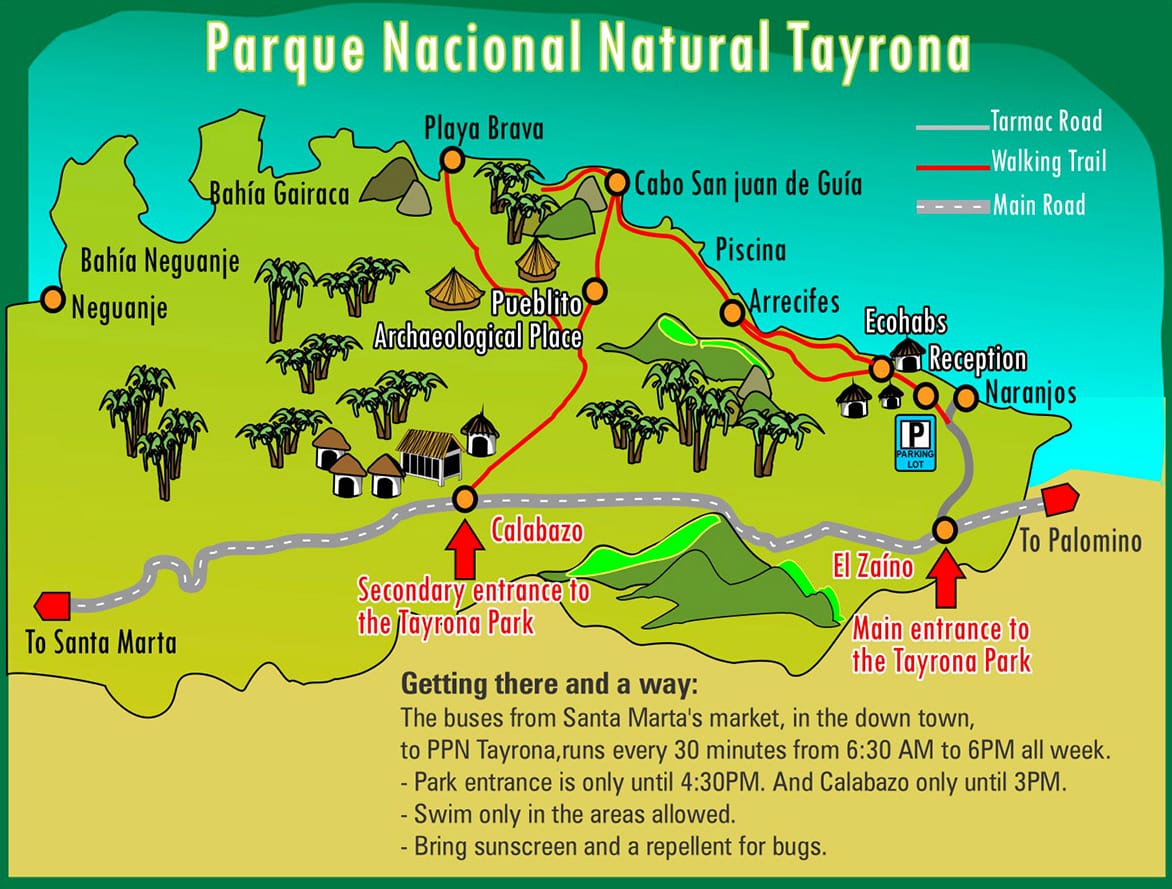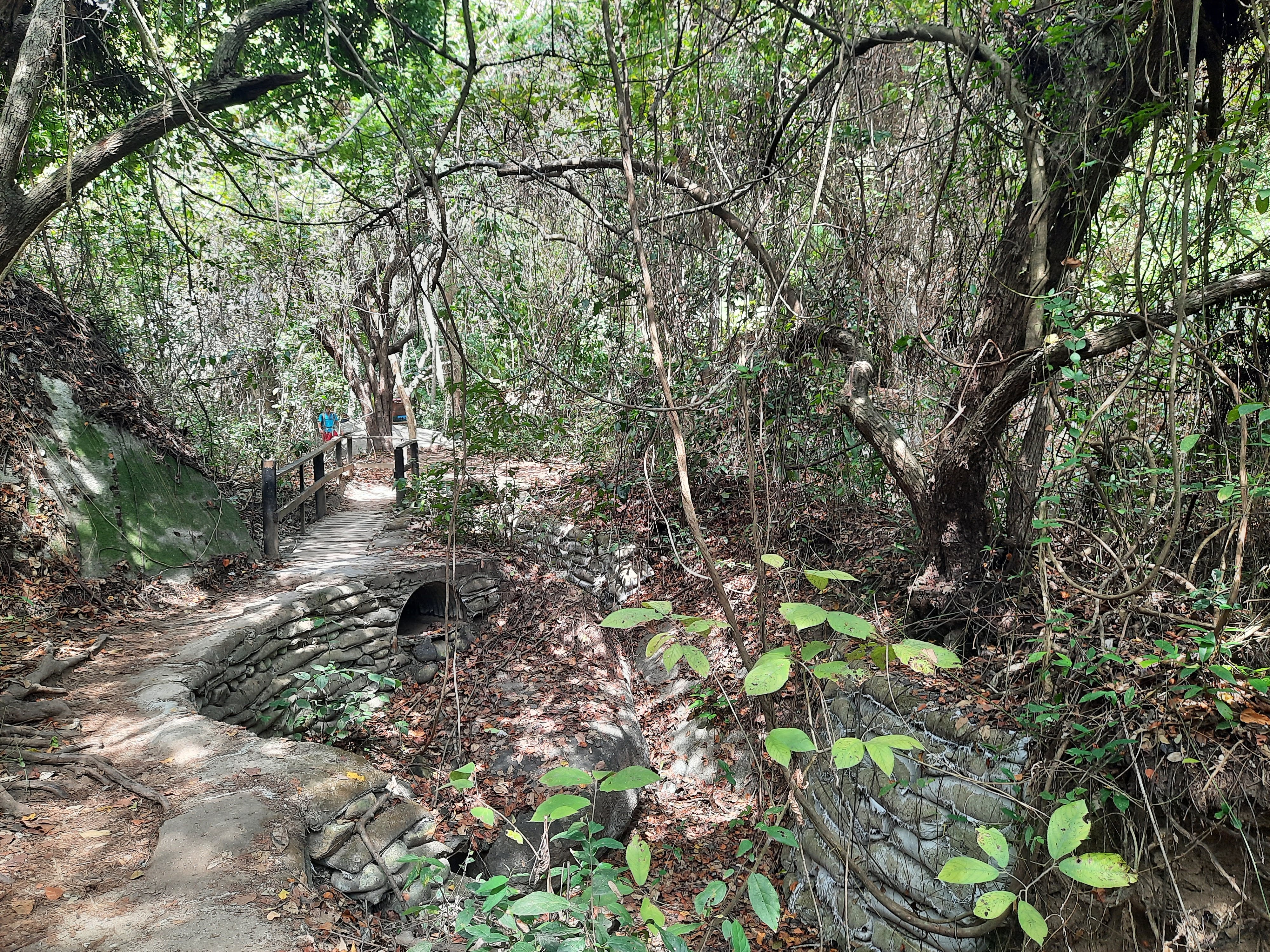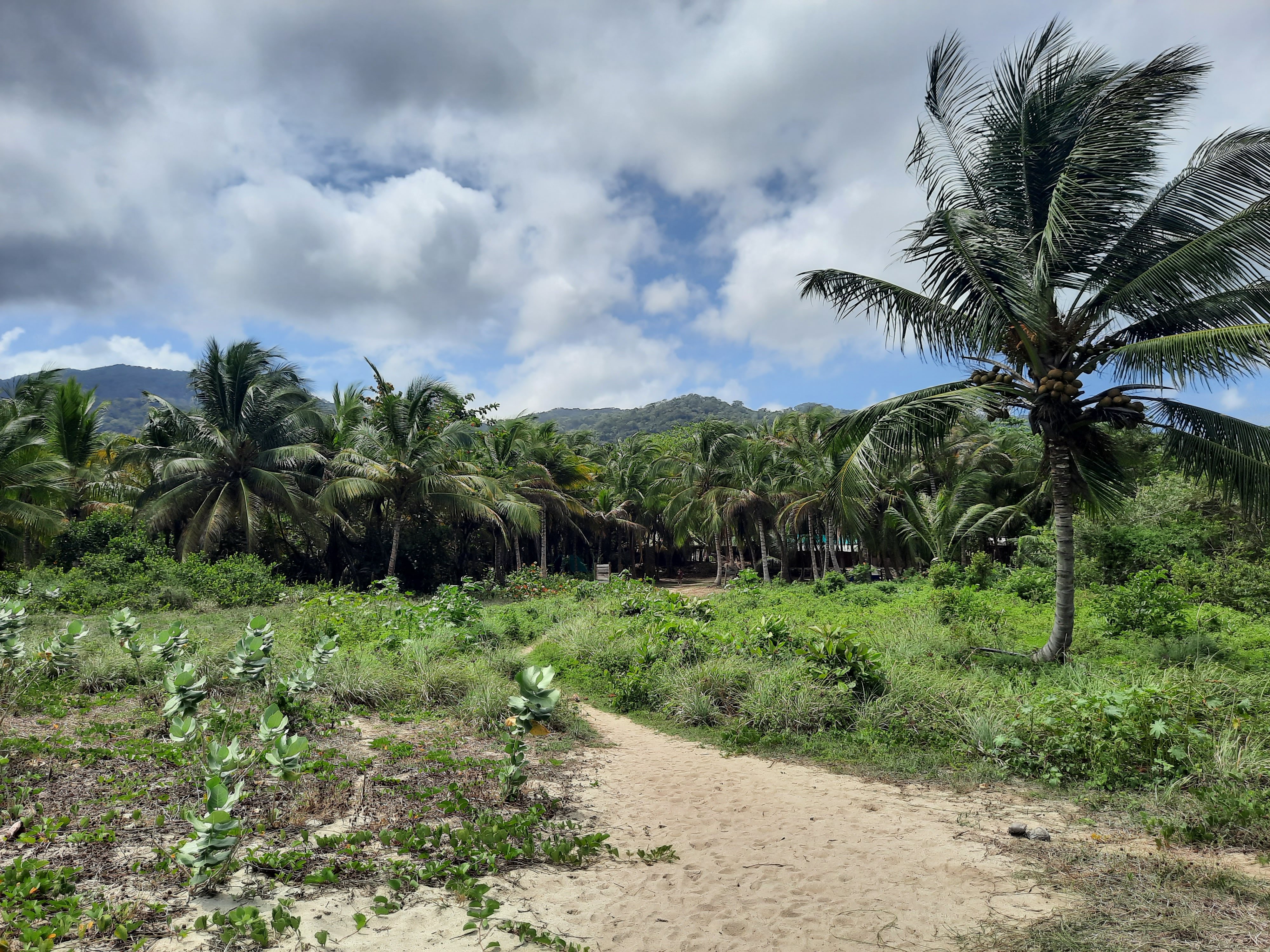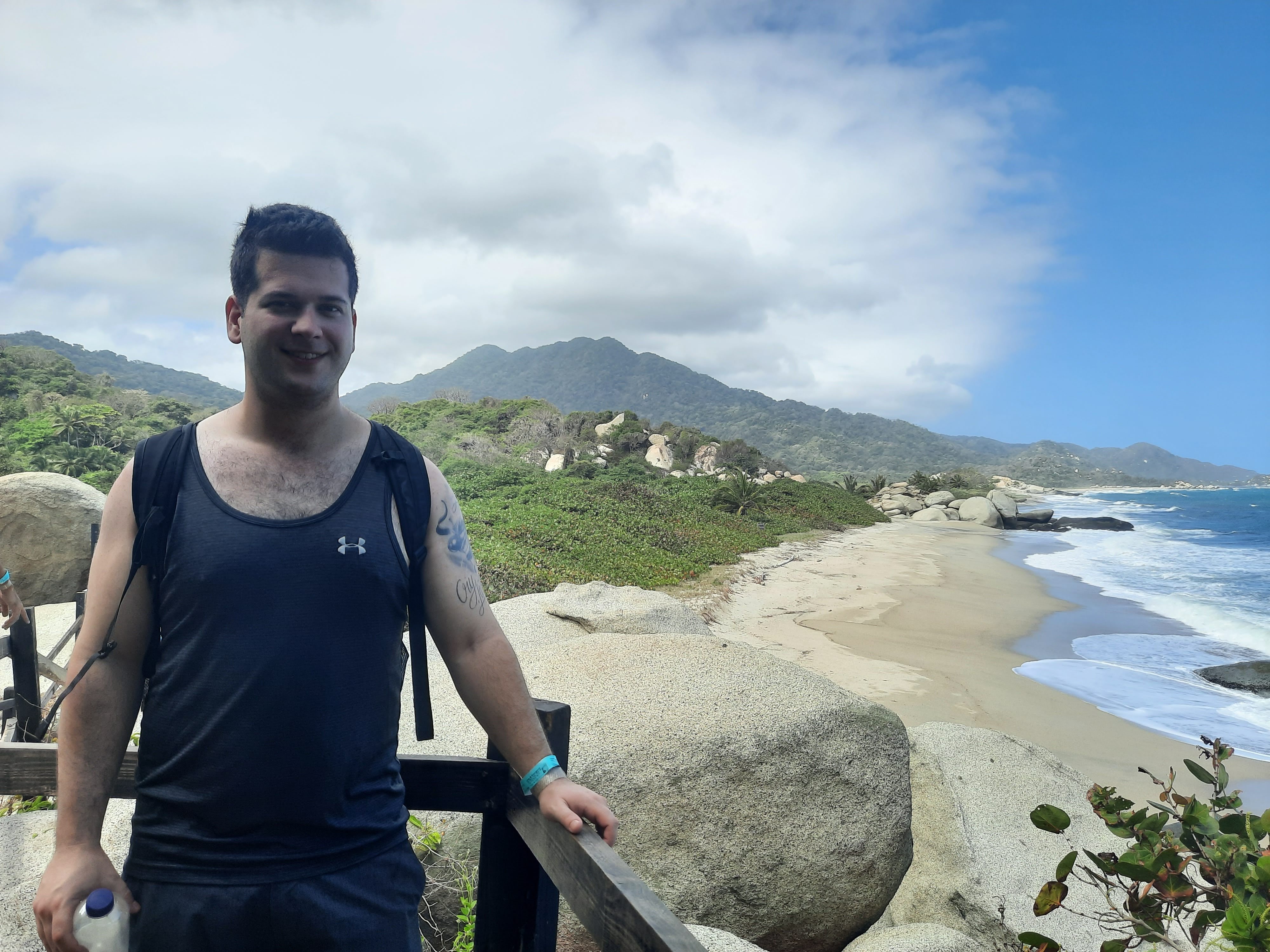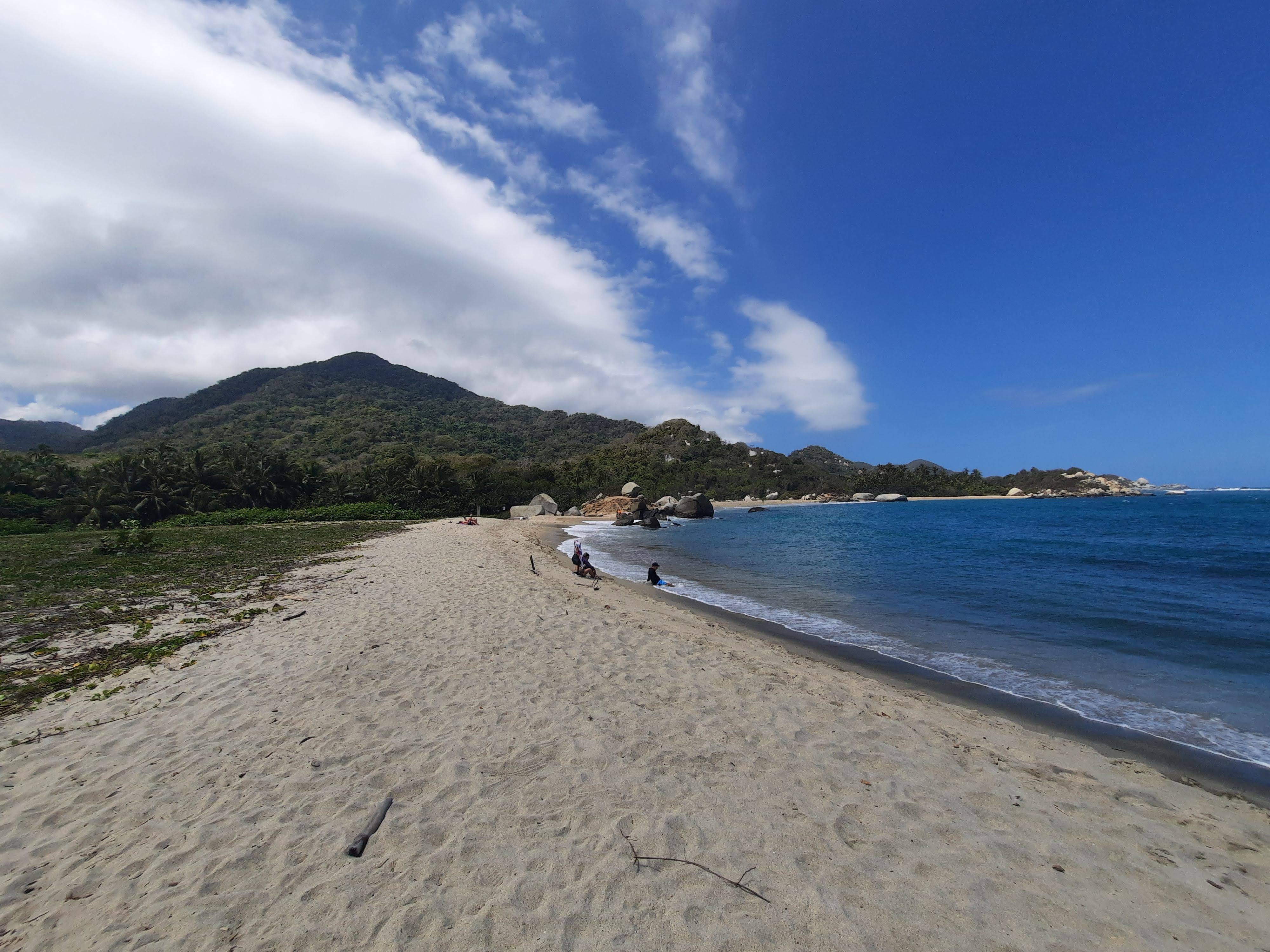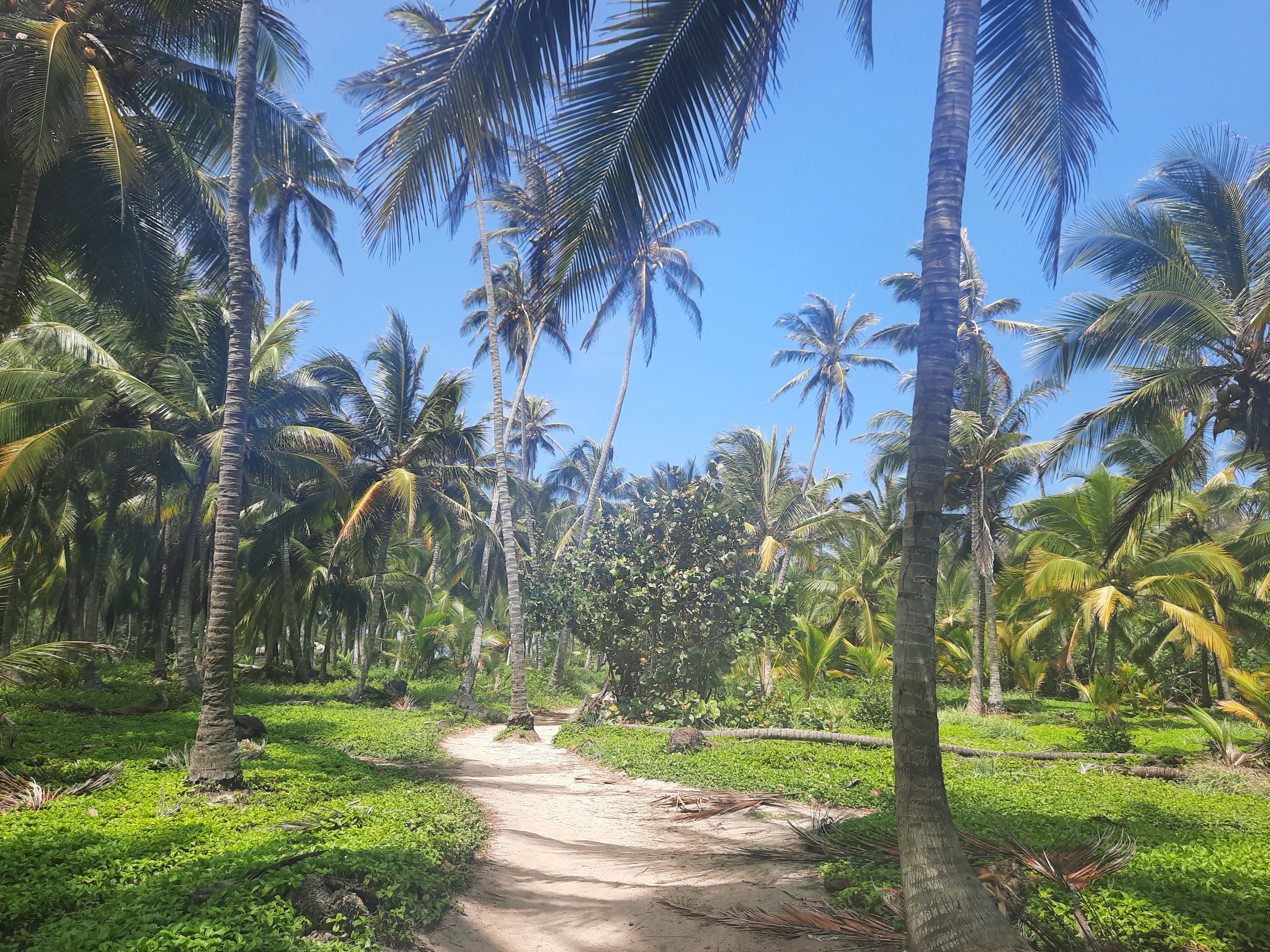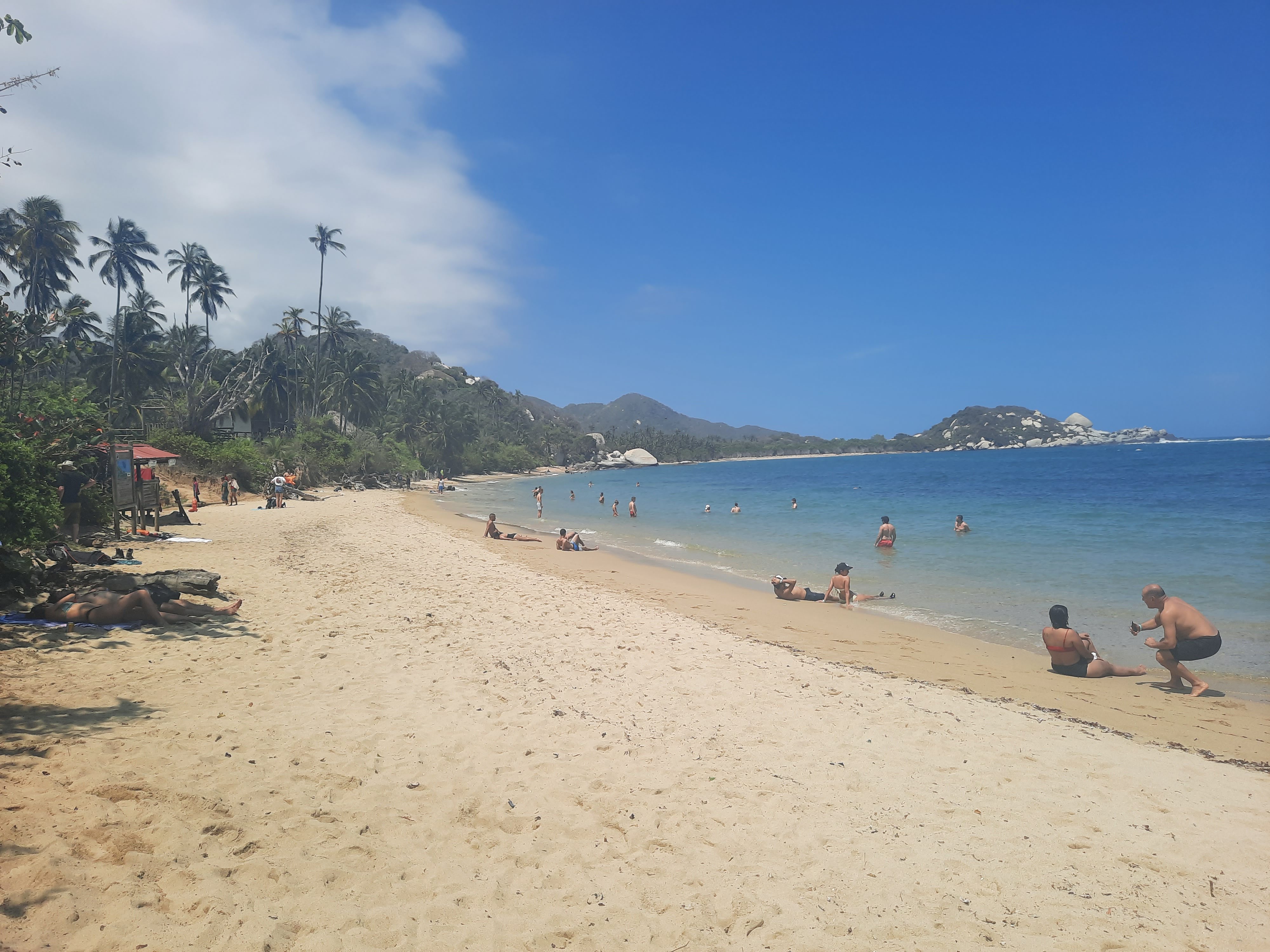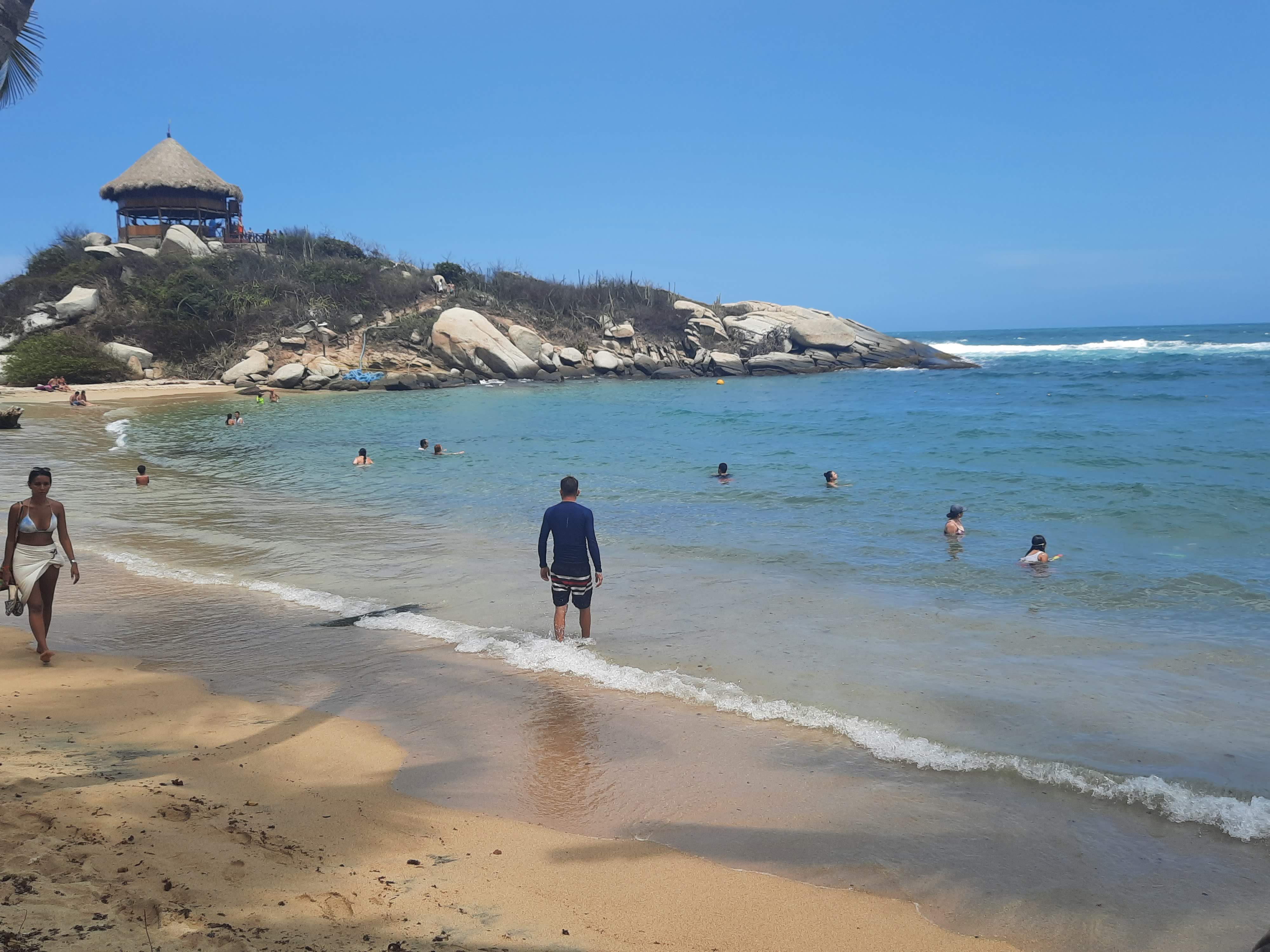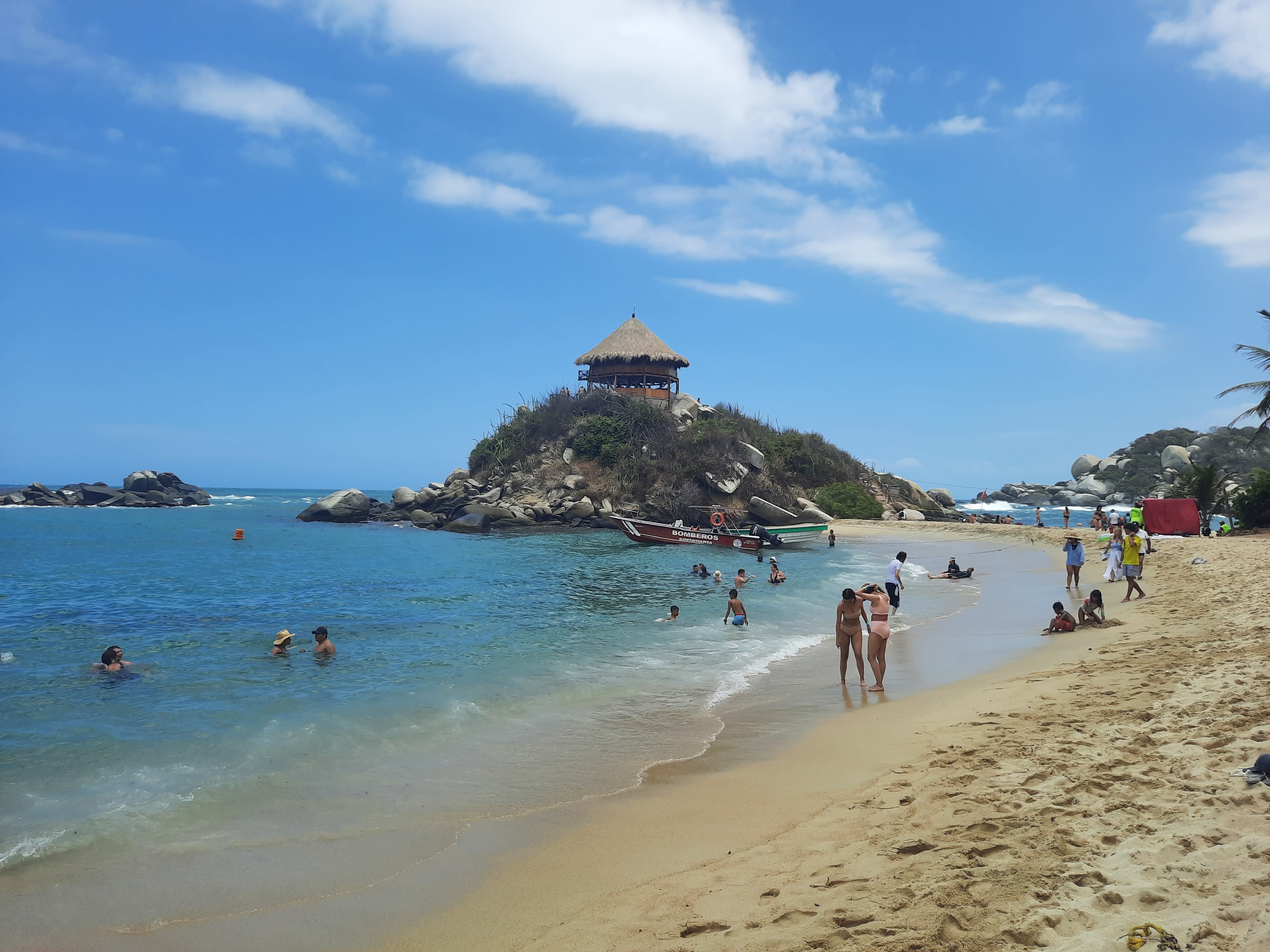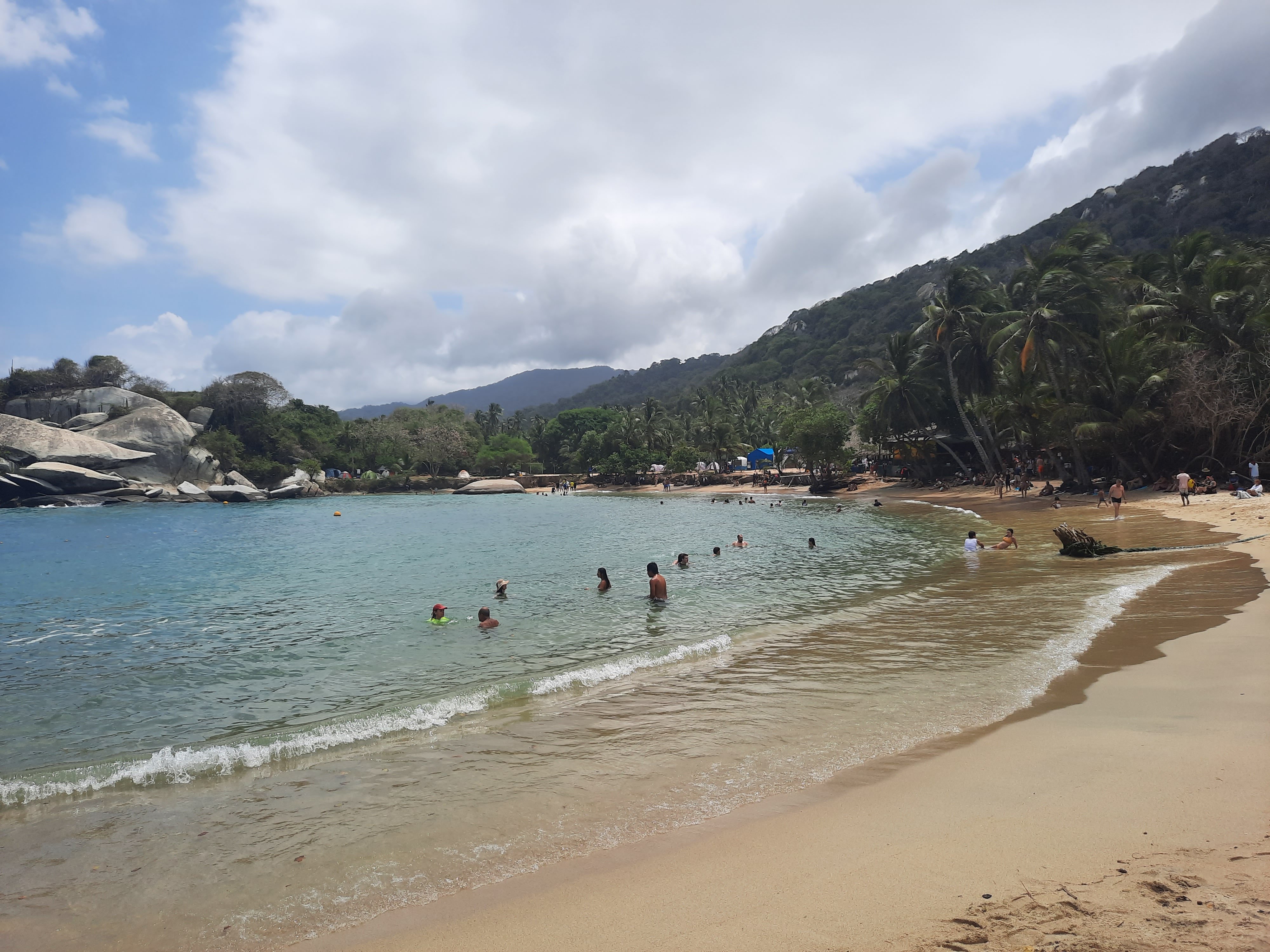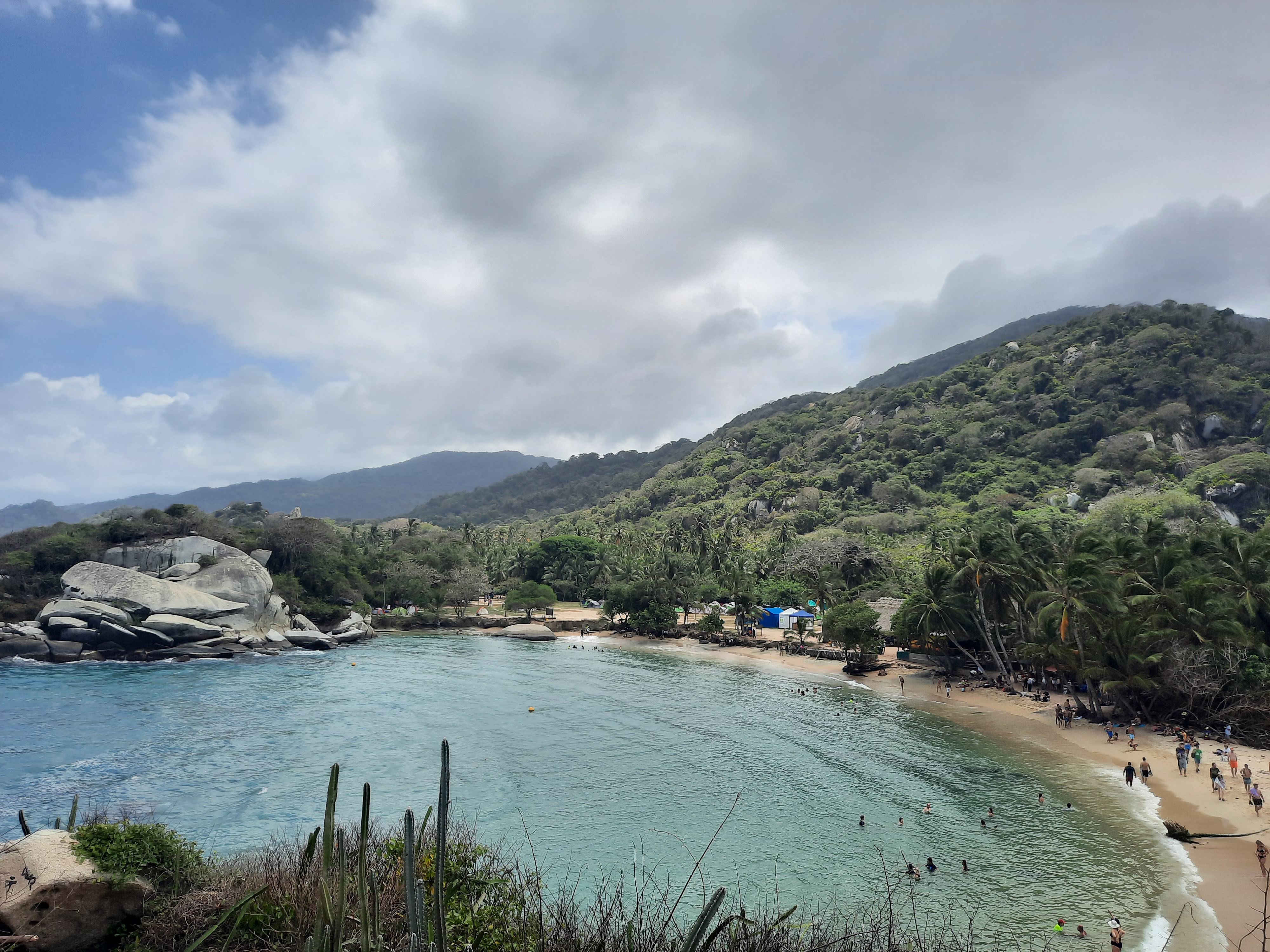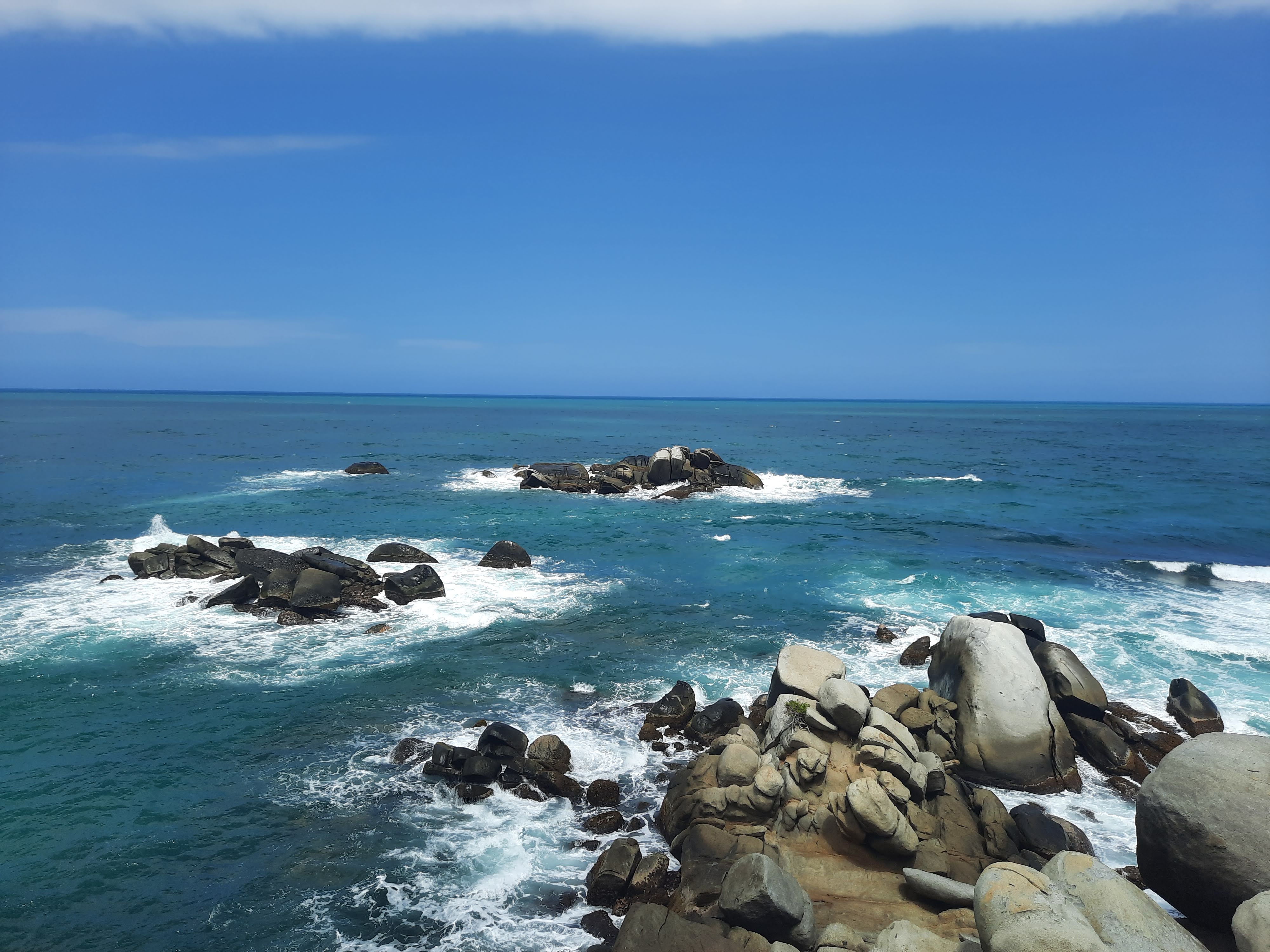Go Back
A day trip to Tayrona National Park
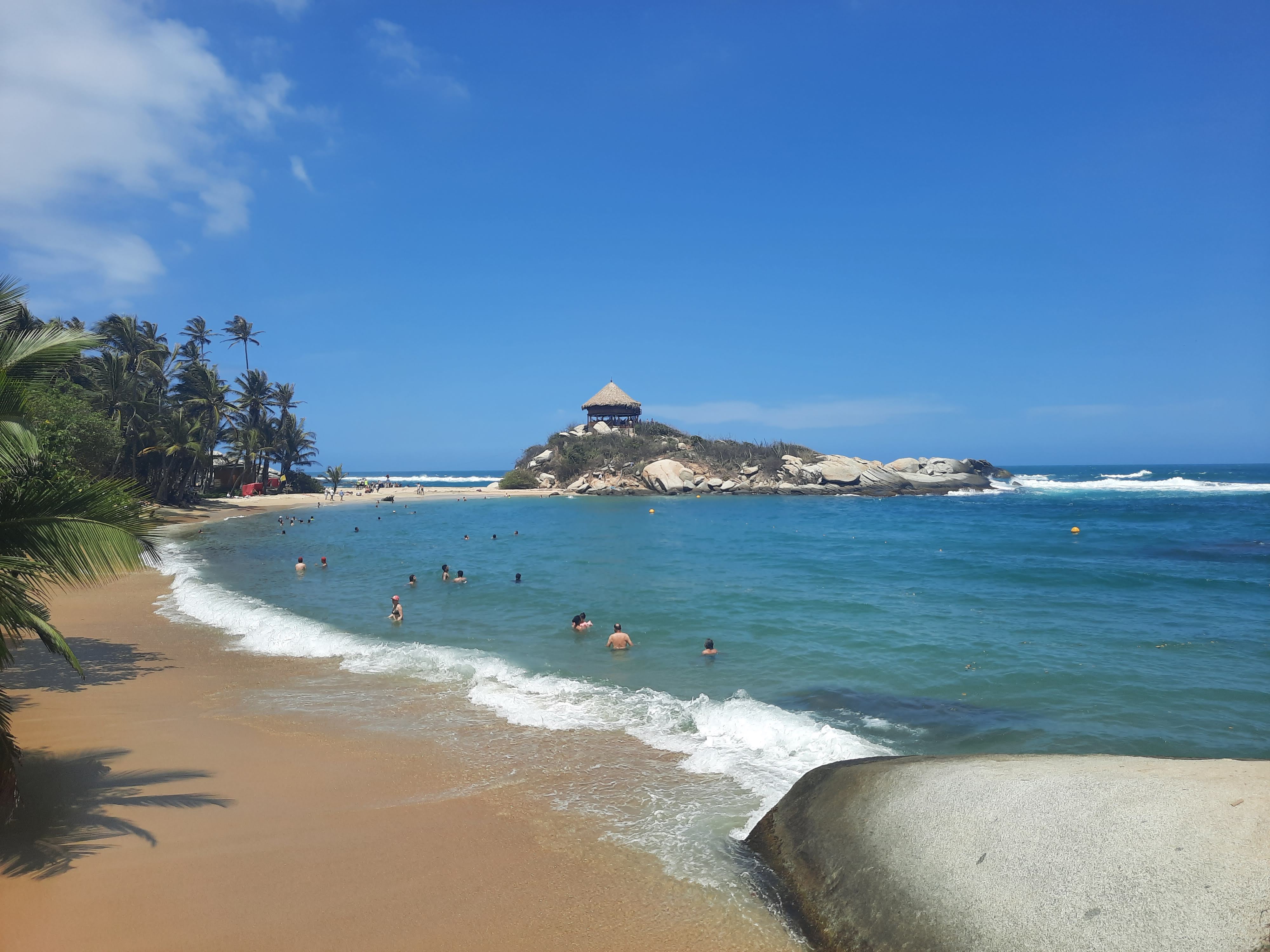
Tayrona National Park is a huge park just outside of Santa Marta. It's one of Colombia's most famous tourist attractions. It's a combination of stunning beaches and exotic jungle. There are lots of camping areas in the national park and that is a popular option for many tourists. When I went I just did a day trip from Santa Marta. This was a destination that I wasn't so certain how the trip would work out so I hope to pass along my advice for how to plan a successful day trip to the park.
There are a few ways to arrive here. The cheapest way is to take a bus from behind the public market on carrera 9. You can take a taxi if you want to spend more money and a third option is to take a boat from the nearby town of Taganga. The main entry point for most people is called El Zaino so I will only cover this entry point as it's the way we took to enter the park. There are a few other options for entry points. After taking a 45 minute to 1 hour bus ride you'll arrive in El Zaino. Then you will have to go through the reception area where you pay for your entry and buy the mandatory insurance (don't worry it's really cheap!). The entry cost was 53,500 COP in March 2022 which is about 12 USD. Once you've bought your entry you go out of the ticket office to the right and take a mini-van up the road about another 5 minutes. This will cost you an extra 5 USD per person I believe but it's worth it. The road from the main ticket office to the starting point doesn't really have anything to spectacular to see so I advise taking the mini-bus back and forth. Once you get off from the mini-bus you are ready to begin the trek. One other possible option is to take a bus one way then take a boat back or vice verse. I opted to take the bus both ways because it's cheaper and I heard the boat rides can be quiet bumpy but I can't comment from first hand experience.
Once you get off the mini-bus and are ready to start the trek through the jungle you basically have two options: walk or go on horseback. Of course going on the horse will cost you money, I believe it was 40 USD for the trip on horseback ride. We opted to walk the trail which took roughly two hours to get to Cabo San Juan and then two hours back. You could always do horseback one way and walk the other way. The terrain can be a bit uneven so if you don't have experience riding a horse it might be quite intense. Other than taking a boat from Taganga to Cabo San Juan I think these are the only options for trekking through the park.
As mentioned there are a few entry points and different routes you can take to explore the park. Many people who camp for a night or two can explore further into the park without having to worry catching a bus or boat back. However if you are only visiting for the day the most common trip is from the El Zaino reception point through Arrecifes beach and La Piscina beach with your final destination being Cabo San Juan. After getting off the mini-bus that brought you to the starting point it should take roughly 2 hours to make it to Cabo San Juan. This all depends of course on how long you stop at each place and how fast you walk. Then of course it will take about the same two hours walking back to the bus. Below I'll outline the three main beaches along the trek.
Arrecifes Beach is the first one that you will reach. After familiarizing yourself with the jungle and beach trails you will reach an expansive beach. The beach here isn't protected from the strong currents and it's very dangerous to swim at this beach. For that reason we just walked along until we passed it and reached the two swimmable beaches. You can find a camping area here along with coconut and snack vendors.
La Piscina is the second beach you will go through. Unlike Arrecifes beach you can swim here as it is more protected from the currents. One big advantage of La Piscina is that not as many tourists stay here compared to Cabo San Juan so if you really can't stand the crowd you can come to another very beautiful quieter beach. We stopped for a little while here before continuing on to Cabo San Juan.
Cabo San Juan is the most famous beach in the park and is where most people are heading to. Once you arrive you'll easily understand why it's so sought after. It's a beautiful beach with pristine sand and turquoise water completely removed from any urbanization. It was also the most crowded beach as everyone is trying to reach this one. You can also swim at this beach since it is like a bay and the ocean currents aren't too strong. There are a few restaurants and snack shacks there as well as a little hut in the middle of the beach with a great view. On Cabo San Juan there is a very big camping area and there are dozens of tents set up for people who want to camp there. We ended up spending a couple hours here relaxing and taking in the scenery before beginning on the trek back.
There is some food available in the park. At the main beaches mentioned above they usually have some small snack booths and there were some restaurants. There are also many coconut vendors and I was even able to get a tinto right before starting off on the trek. I remember having a sandwich at Cabo San Juan from one of the snack shacks. There was also a restaurant at Cabo San Juan but it was very pricy. It would be a good idea to bring some snacks and is essential to bring water because not only is it a long walk, it can be close to 40 degrees at times and food/ drink is quite limited to specific areas in the park.
It's important to factor in the weather on the day you visit. It wouldn't be pleasant if it was raining very heavily. The least rainy time of the year in the park is January to March. One thing to keep in mind is that the park is closed the first 15 days of February on any given year for a variety of reasons such as preserving the biodiversity of the park, enable the regeneration of the ecosystems, cleanup days, healing and environmental and spiritual protection. Bring sunscreen, a hat, sunglasses and good hiking shoes. Also again most importantly bring lots of water!
